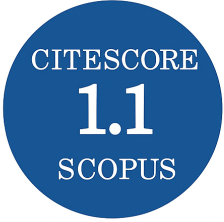Real-time Optimal Control of Multi-wheeled Combat Vehicles – using Artificial Neural Network and Potential Fields
DOI:
https://doi.org/10.3849/aimt.01237Keywords:
real‐time, optimal control theory, path planning, autonomous multi‐wheeled combat vehicle, Artificial Neural Network, artificial potential fieldsAbstract
This paper presents a real‐time path planning algorithm for autonomous multi‐wheeled combat vehicles using Artificial Neural Network (ANN), Artificial Potential Fields (APFs) and optimal control theory. Real‐time navigation of autonomous vehicles is a very complex problem and it is crucial for many military operations. This paper proposes an optimal control and ANN approach for a dynamic model of the multi‐wheeled combat vehicle to generate the possible optimal paths that cover every part of the workspace. Consequently, the obtained paths are used to train the proposed ANN model. The trained ANN has the capability to control the movement of combat vehicle in real time from any starting point to the desired goal position within the area of interest. The vehicle path is autonomously generated from the previous vehicle location parameter in terms of lateral velocity, heading angle and yaw rate of the vehicle. APF is proposed for preventing the vehicle from colliding with obstacles in border destination. The effectiveness and efficiency of the proposed approach are demonstrated in the simulation results, which show that the proposed ANN model is capable of navigating the multi‐wheeled combat vehicle in real time.
References
FISHER, A. Inside Google’s Quest to Popularize Self‐Driving Cars. Popular Science, 2013, vol. 18, p. 2013-09.
KESSLER, A.M. Elon Musk Says Self‐driving Tesla Cars Will Be in the US by Summer. The New York Times, 2015-03-19.
VALOIS, J., HERMAN, H., BARES, J. and RICE, D.P. Remote Operation of the Black Knight Unmanned Ground Combat Vehicle. In Proceedings of SPIE – Unmanned Systems Technology X, 2008. ISBN 978-0-8194-7153-6.
RAGHEB, H., EL‐GINDY, M. and KISHAWY, H.A. On the Multi‐wheeled off‐road Vehicle Performance and Control. International Journal of Vehicle Systems Modelling and Testing, 2013, vol. 8, no. 3, p. 260-281. ISSN 1745-6436.
FAROUKI, R.T., GIANNELLI, C., MUGNAINI, D. and SESTINI, A. Path Planning with Pythagorean‐hodograph Curves for Unmanned or Autonomous Vehicles. In Proceedings of the Institution of Mechanical Engineers, Part G: Journal of Aerospace Engineering, London: Sage, 2017. https://doi.org/10.1177/0954410017690550.
PERUMAL, D.G. et al.. MILP Based Autonomous Vehicle Path‐planning Controller for Unknown Environments with Dynamic Obstacles. International Journal of Heavy Vehicle Systems, 2016, vol. 23, no. 4, p. 350-369. https://doi.org/10.1504/IJHVS.2016.079272.
QU, Y., ZHANG, Y. and ZHANG, Y. Optimal Flight Path Planning for UAVs in 3‐D Threat Environment. In International Conference on Unmanned Aircraft Systems (ICUAS), 2014, Orlando: IEEE, p. 149-155. https://doi.org/10.1109/ICUAS.2014.6842250.
YANG, S., WANG, Z. and ZHANG, H., Kinematic Model‐based Real‐time Path Planning Method with Guide Line for Autonomous Vehicle. In 36th Chinese Control Conference (CCC), Dalian: IEEE, 2017, p. 990-994.https://doi.org/10.23919/ChiCC.2017.8027474.
ZHANG, X., LÜTTEKE, F., ZIEGLER, C. and FRANKIE, J. Self‐learning RRT Algorithm for Mobile Robot Motion Planning in Complex Environments. In MENEGATTI, E., MICHAEL, N., BERNS, K. and YAMAGUCHI, H. (eds) Intelligent Autonomous Systems 13. Advances in Intelligent Systems and Computing, 2016, vol. 302, Cham: Springer, p. 57-69. https://doi.org/10.1007/978-3-319-08338-4_5.
ZHANG, Y., LI, S. and GUO, H. A Type of Biased Consensus‐based Distributed Neural Network for Path Planning. Nonlinear Dynamics, 2017, vol. 89, no. 3. p. 1803-1815. https://doi.org/10.1007/s11071-017-3553-7.
KODGULE, S.A., DAS, A. and SELVAKUMAR, A.D.A. A Comparative Study between Hopfield Neural Network and A* Path Planning Algorithms for Mobile Robot. In DASH, S., VIJAYAKUMAR, K., PANIGRAHI, B. and DAS, S. (eds) Artificial Intelligence and Evolutionary Computations in Engineering Systems. Advances in Intelligent Systems and Computing, vol. 517, Singapore: Springer, 2017, p. 33-48, https://doi.org/10.1007/978-981-10-3174-8_4.
LUO, C., ZHANG, J., JAN, G.E. and MO, H. A New Hopfield‐type Neural Network Approach to Multi‐goal Vehicle Navigation in Unknown Environments. In 2016 IEEE International Conference on Vehicular Electronics and Safety (ICVES), Beijing: IEEE, 2016, p. 1-6. https://doi.org/10.1109/ICVES.2016.7548165.
NI, J., WU, L., SHI, P. and YANG, S.X. A Dynamic Bioinspired Neural Network Based Real‐Time Path Planning Method for Autonomous Underwater Vehicles. Computational Intelligence and Neuroscience, 2017. DOI 10.1155/2017/9269742.
REHDER, E., QUEHL, J. and STILLER, C. Driving like a Human: Imitation Learning for Path Planning Using Convolutional Neural Networks. In International Conference on Robotics and Automation Workshops, 2017.
NAZEMI, A. and OMIDI, F. An Efficient Dynamic Model for Solving the Shortest Path Problem. Transportation Research Part C: Emerging Technologies, 2013, vol. 26, p. 1-19. https://doi.org/10.1016/j.trc.2012.07.005.
ZHANG, Y., WU, L., WEI, G. and WANG, S. A Novel Algorithm for all Pairs Shortest Path Problem Based on Matrix Multiplication and Pulse Coupled Neural Network. Digital Signal Processing, 2011, vol. 21, no. 4, p. 517-521. https://doi.org/10.1016/j.dsp.2011.02.004.
SANG, Y., LV, J., QU, H. and YI, Z. Shortest Path Computation Using Pulse‐coupled Neural Networks with Restricted Autowave. Knowledge‐Based Systems, 2016, vol. 114, p. 1-11. https://doi.org/10.1016/j.knosys.2016.08.027.
LI, X., MA, Y. and FENG, X. Self‐adaptive Autowave Pulse‐coupled Neural Network for Shortest‐path Problem. Neurocomputing, 2013, vol. 115, p. 63-71. https://doi.org/10.1016/j.neucom.2012.12.030.
QU, H., YI, Z. and YANG, S.X. Efficient Shortest‐path‐tree Computation in Network Routing Based on Pulse‐coupled Neural Networks. IEEE Transactions on Cybernetics, 2013, vol. 43, no. 3, p. 995-1010. https://doi.org/10.1109/TSMCB.2012.2221695.
Wikipedia: Stryker [on line]. [cited 2013-02-10]. Available from: <http://en.wikipedia.org/wiki/Stryker>.
REN, J. et al. A Potential Field Model Using Generalized Sigmoid Functions. IEEE Transactions on Systems, Man, and Cybernetics, Part B (Cybernetics), 2007, vol. 37, no. 2. p. 477-484. https://doi.org/10.1109/TSMCB.2006.883866.
KIEN, B.T., RÖSCH, A. and WACHSMUTH, D. Pontryagin’s Principle for Optimal Control Problem Governed by 3D Navier–Stokes Equations. Journal of Optimization Theory and Applications, 2017, vol. 173, no. 1, p. 30-55. https://doi.org/10.1007/s10957-017-1081-8.
ONORI, S., SERRAO, L. and RIZZONI, G., Pontryagin’s Minimum Principle. In ONORI, S., SERRAO, L. and RIZZONI, G. (eds) Hybrid Electric Vehicles – Energy Management Strategies. London: Springer, 2016, p. 51-63. https://doi.org/10.1007/978-1-4471-6781-5_5.
MOHAMED, A., REN, J., LANG, H. and EL‐GINDY, M. Optimal Collision‐free Path Planning for an Autonomous Articulated Vehicle with Two Trailers. In International Conference on Industrial Technology (ICIT), Toronto: IEEE, 2017, p. 860-865. https://doi.org/10.1109/ICIT.2017.7915472.
KAUR, T. Implementation of Back Propagation Algorithm: A Neural Network Approach for Pattern Recognition. International Journal of Engineering Research and Development, 2012, vol. 1, no. 5, p. 30-37. ISSN 2278-067X.
Downloads
Published
License
Copyright (c) 2018 Advances in Military Technology

This work is licensed under a Creative Commons Attribution-NonCommercial 4.0 International License.
Authors who publish with this journal agree to the following terms:
1. Authors retain copyright and grant the journal right of first publication with the work simultaneously licensed under a Creative Commons Attribution License that allows others to share the work with an acknowledgement of the work's authorship and initial publication in this journal.
2. Authors are able to enter into separate, additional contractual arrangements for the non-exclusive distribution of the journal's published version of the work (e.g., post it to an institutional repository or publish it in a book), with an acknowledgement of its initial publication in this journal.
3. Authors are permitted and encouraged to post their work online (e.g., in institutional repositories or on their website) prior to and during the submission process, as it can lead to productive exchanges, as well as earlier and greater citation of published work.
Users can use, reuse and build upon the material published in the journal for any purpose, even commercially.






